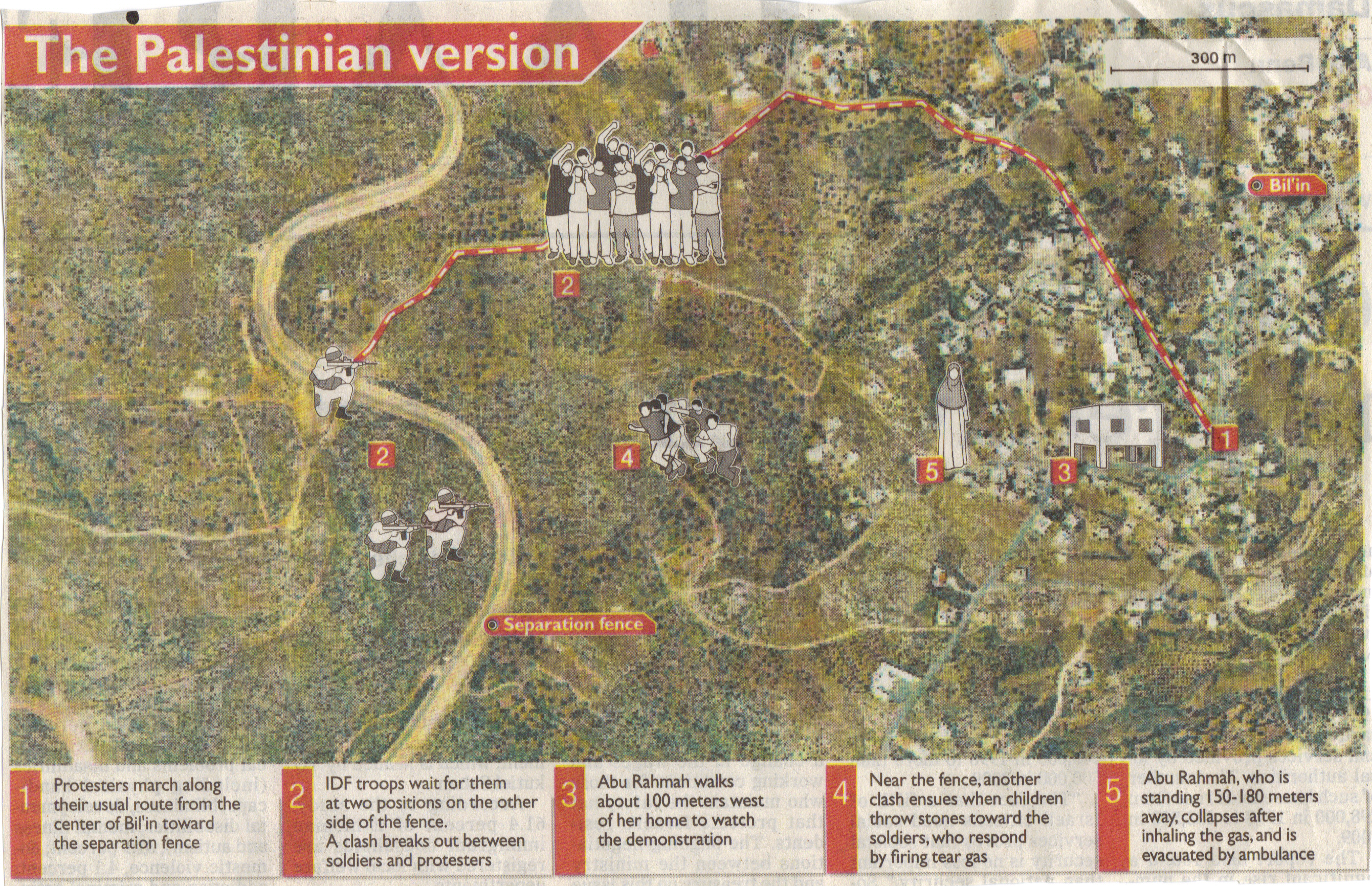The Economist fancies itself a sophisticated magazine, one which “offers authoritative insight” into news, politics, business, finance, science and technology. However, as it pertains to Israel, they’ve sometimes proven themselves just as vulnerable to the mindless groupthink plaguing the rest of the media.
A case in point involves their review of The Way to the Spring: Life and Death in Palestine by Ben Ehrenreich (The view on the ground, June 11), a book featuring the Tamimis of the West Bank town of Nabi Saleh. Though some British media outlets have caught on to the family’s well-choreographed ‘Pasbara’, the anonymous Economist critic barely shows even a hint of journalistic skepticism in the face of Ehrenreich’s risible narrative.
[Ehrenreich] brings a novelist’s eye to his subject, framing the bulk of his book around one village, Nabi Saleh, 30 miles (48km) north-west of Ramallah, the seat of the Palestinian Authority in the West Bank, and around a group of a few dozen protesters, most of them confusingly from the same extended Tamimi family.
The spring of the title is a real, not a metaphorical Arab spring; a water source used by the Tamimis and others in Nabi Saleh for many decades until, in 1976, the first Israeli settlers arrived and established a community they later called Halamish. Slowly Halamish expanded, as more and more of the land was taken, often for “military needs”, until in 2008 the spring itself was seized.
In 2009 the villagers of Nabi Saleh began what became a long series of marches to their spring; they were opposed by armed settlers, and then by the Israeli army as well, which, the author recounts, fired tear-gas grenades, often directly at the protesters at face or chest height, and rubber-coated bullets. The Tamimis, and Mr Ehrenreich, make a point of always calling them that, not “rubber bullets”. Consisting of a thin layer of rubber around a steel core, a rubber-coated bullet can break a jawbone. It can penetrate the flesh.
The Nabi Saleh marches, of course, achieved nothing. But they generated some media attention, and they drew activists and observers not just from Israel but from around the world. They have been, as Bassem Tamimi says, “a way to tell the world that we have the right to work our land…the spring is the face of the occupation, the occupation is illegal and we have the right to struggle against it.”
It is in the author’s descriptions of the Tamimis that the hope, and the love, are to be found; the dedication day after day to an effort that yields only failure, sometimes arrest and injury, and even death; and the concern that the Tamimis share for each other, waiting outside detention centres and hospitals for news of a relative.
As noted by our colleague Tamar Sternthal, Nabi Saleh is “where photographers gather nearly every Friday to document repetitious scenes of Palestinian residents and international activists clashing with Israeli soldiers” and where activists often place their children in danger to score propaganda points.
Nabi Saleh’s most popular Pallywood child star, Ahed Tamimi (dubbed “Shirley Temper“), revived her recurring role as the symbol of Palestinian “resistance” last August, when she was seen attacking an Israeli soldier who had detained a rock-thrower.

The 15 year-old girl also stars in this video, from the most recent Nabi Saleh event on June 3rd.
Additionally, another family member, Manal Tamimi, whose part of the Tamimi media team and the one reportedly responsible for staging such protests, has, on Twitter, engaged in vicious antisemitism and openly expressed her support for the murder of Israeli Jews.
Tellingly, Ehrenreich is the same writer who (in a 2013 New York Times Magazine cover story) romanticized the culture of terrorism in the Tamimis’ ‘little village’ and whitewashed the crime of its most infamous resident, a woman named Ahlam Tamimi, one of the main terrorists responsible for the deadly Sbarro bombing in 2001.

The Economist review makes no mention of Ahlam Tamimi or the disturbing fact that, according to Ehrenreich in his NYT Magazine feature, she is still quite admired in the town.
It’s actually quite extraordinary that a publication which prides itself on peeling off the superficial layers of a story to reveal the story behind the story published a review of a book featuring the Tamimis without giving readers even the slightest inclination that the family, and the protests they stage, represents something akin to Palestinian street theater, a Pallywood production packaged as real news.
Related articles
- Poisonous Palestinian Propaganda Creeps into Elementary Schools (CAMERA)
- How devoted to non-violence are the villagers of Nabi Selah? (This Ongoing War)
- How a Family Became a Propaganda Machine (The Tower)
- Shirley Temper’s Father Still Idolizing Terrorists (Israellycool)
- Pallywood star “Shirley Temper” is Amnesty’s poster child – literally (Elder of Ziyon)





